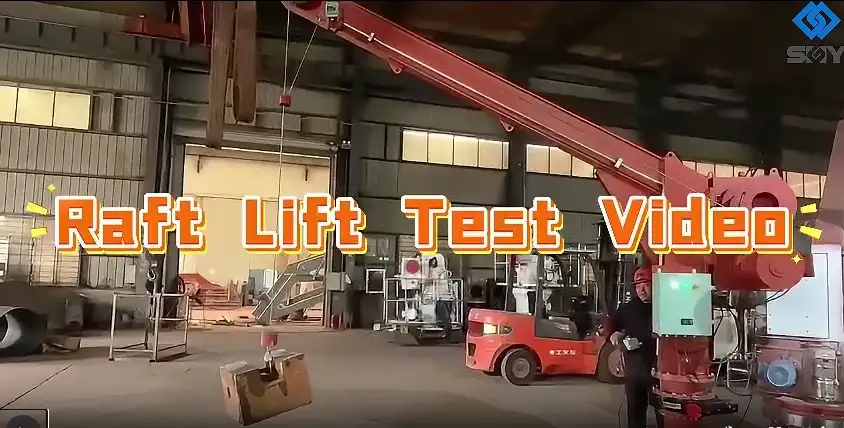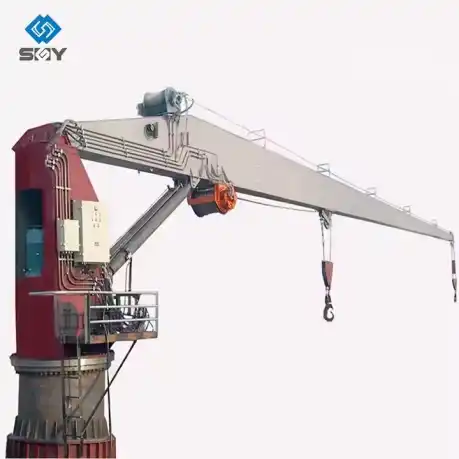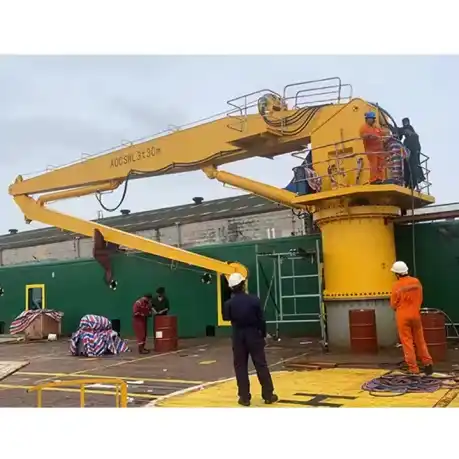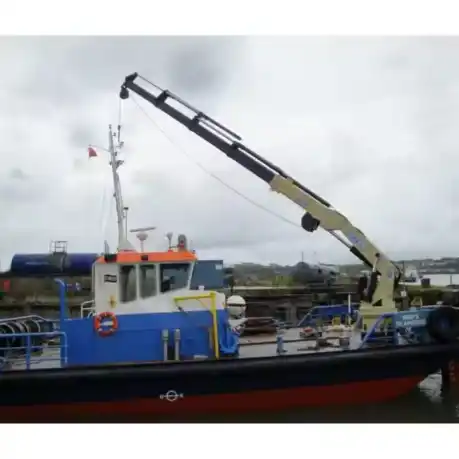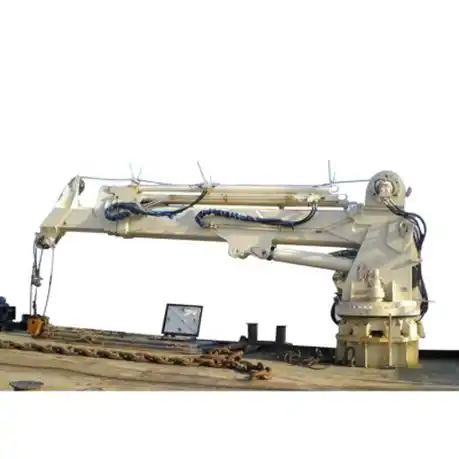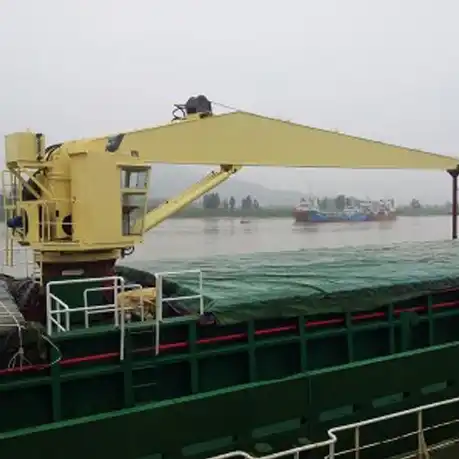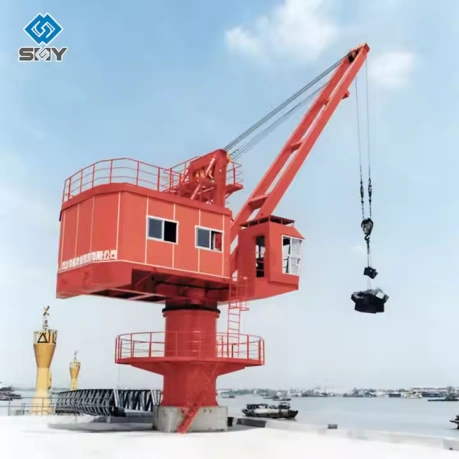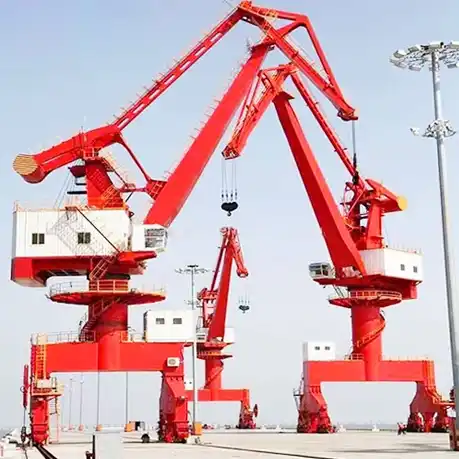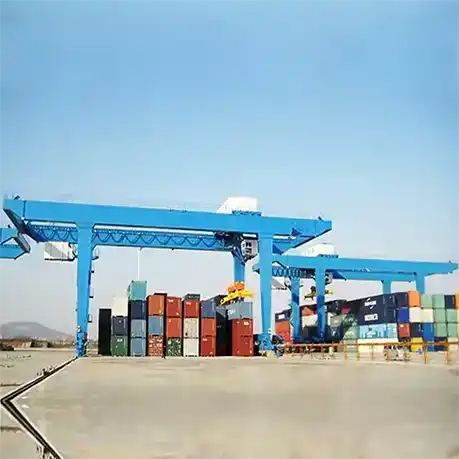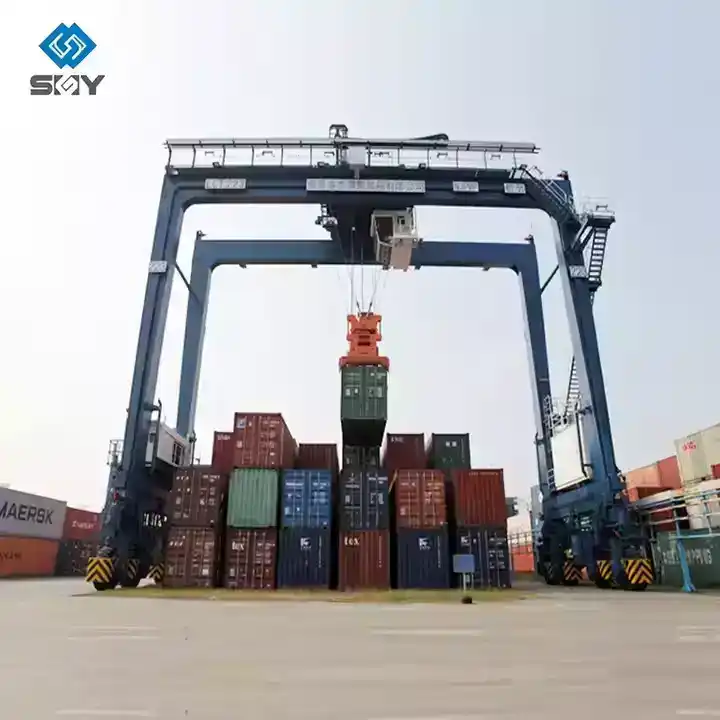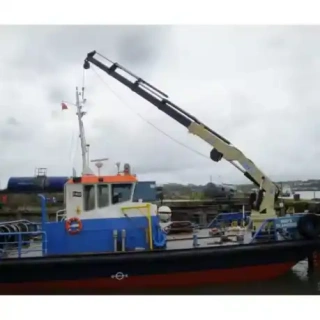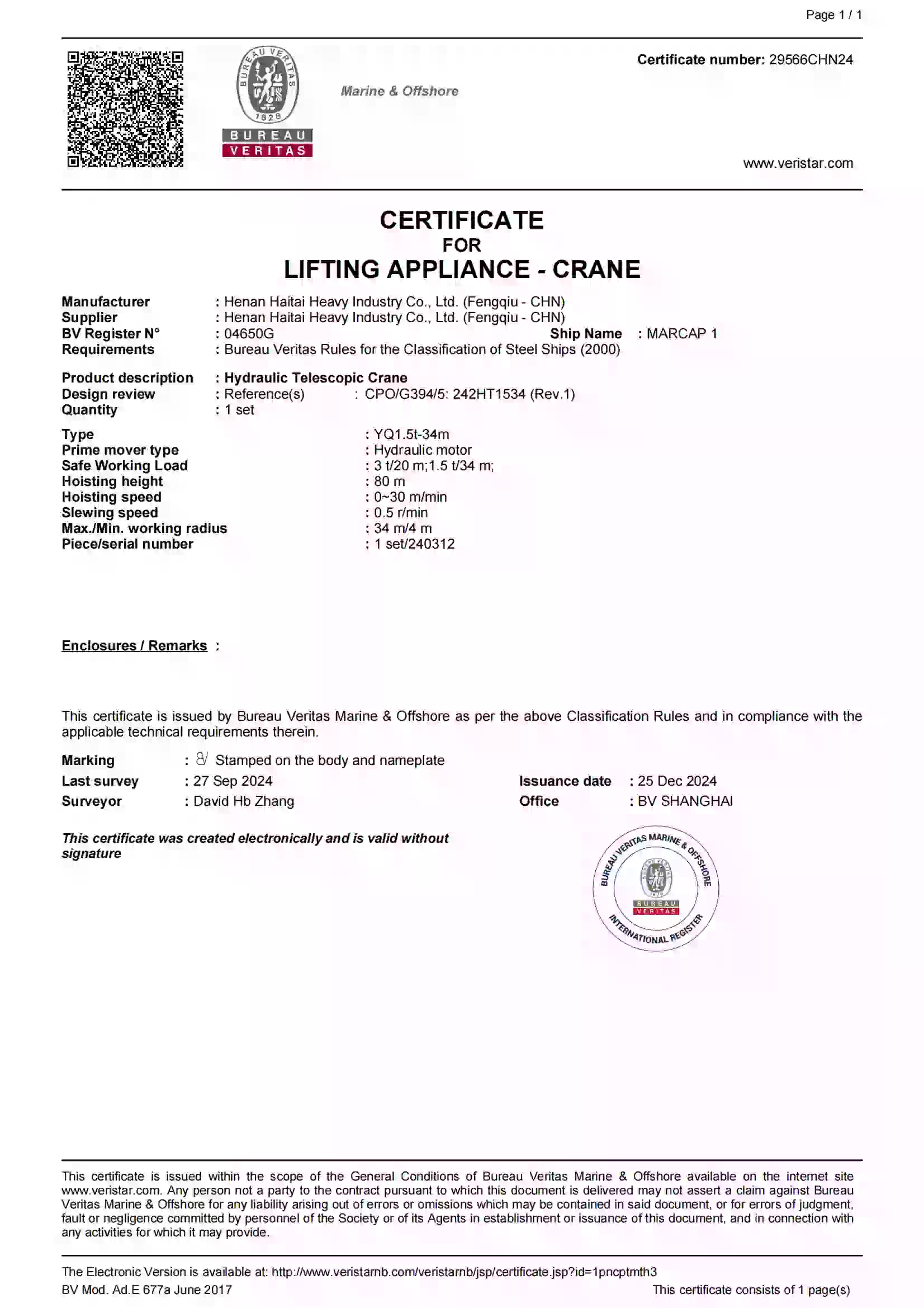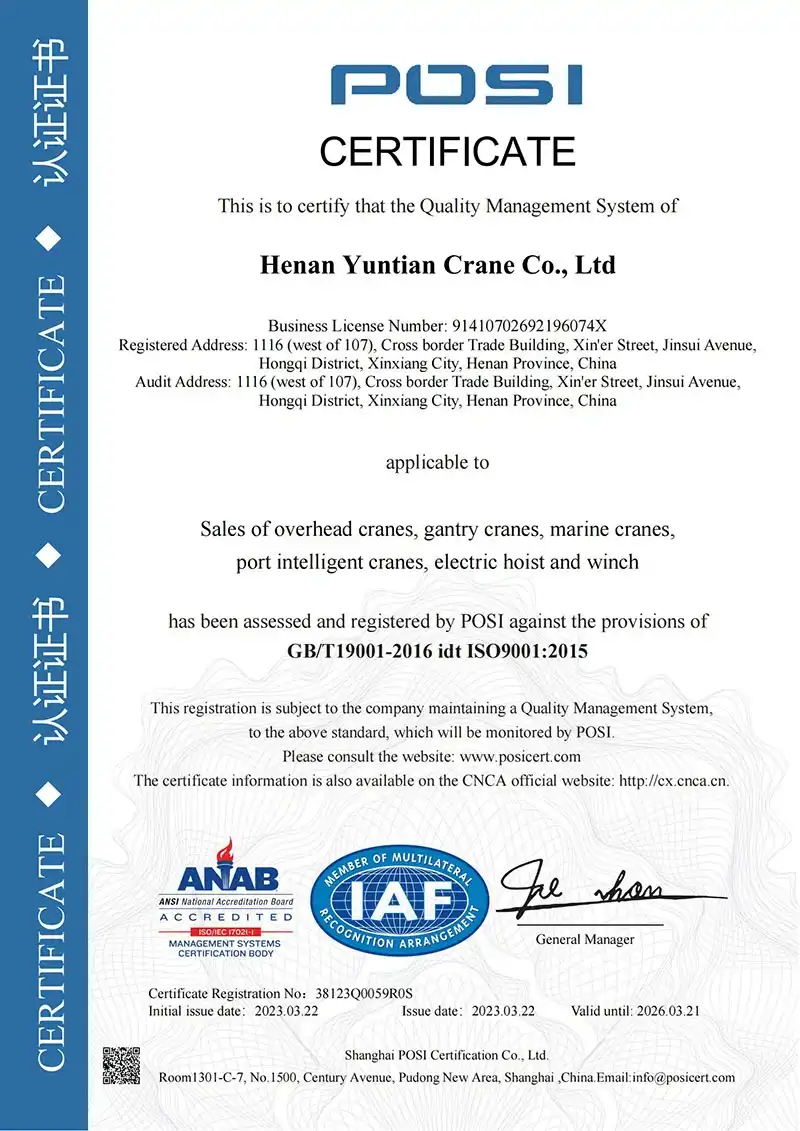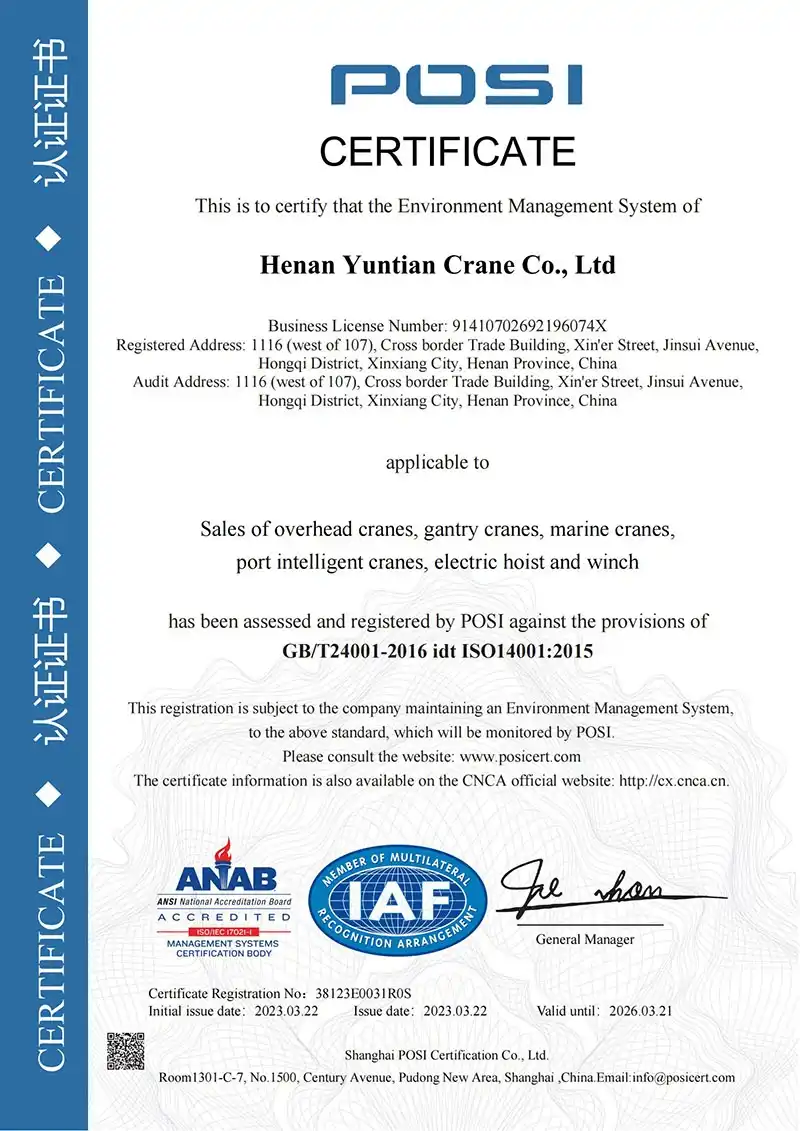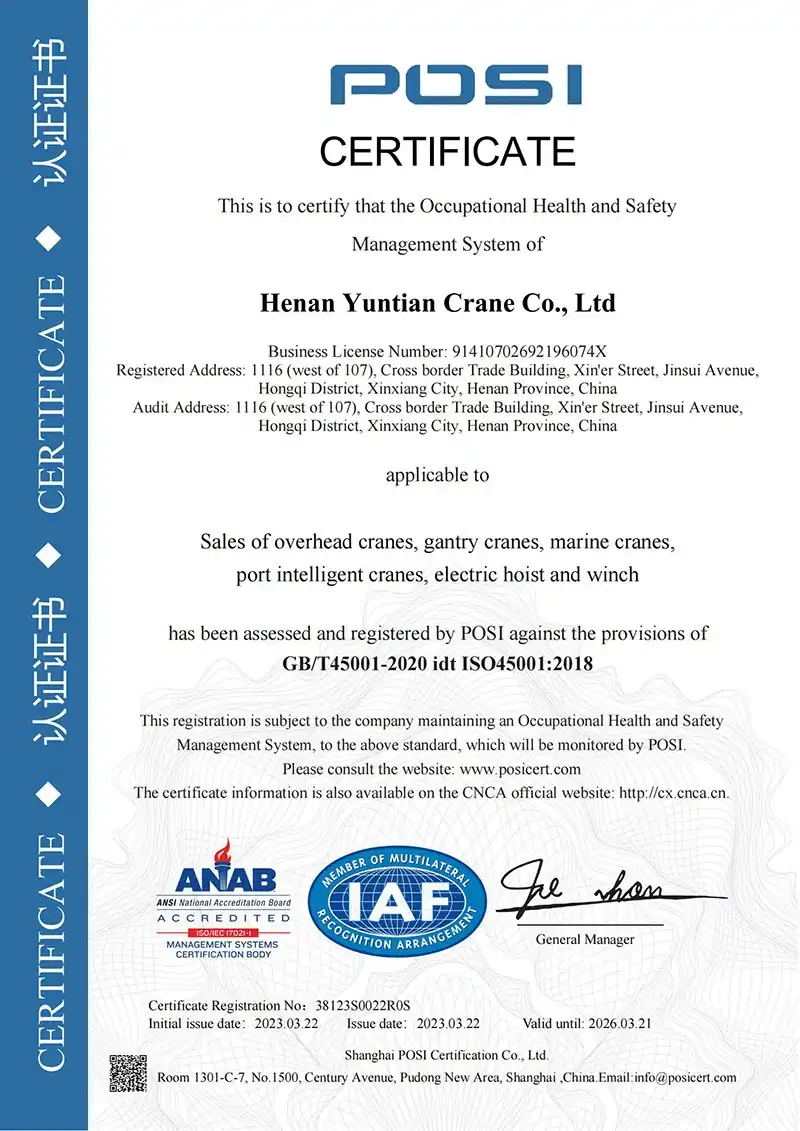





Why Choose Our Marine Cargo Deck Crane?
Unmatched Performance and Reliability for Bulk Cargo Ships and Barges
Our Marine Cargo Deck Crane is built to perform in the toughest conditions at sea. It uses advanced hydraulics, strong materials, and precise controls to handle cargo smoothly and safely. It is designed for bulk carriers, barges, and other commercial ships. It offers safety, efficiency, and long-lasting performance.
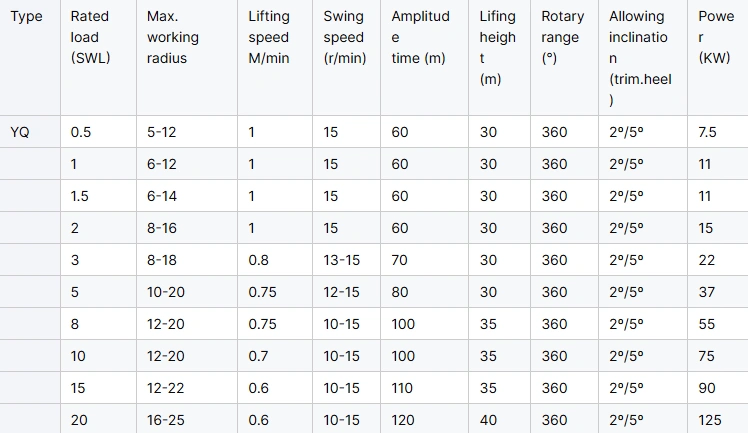
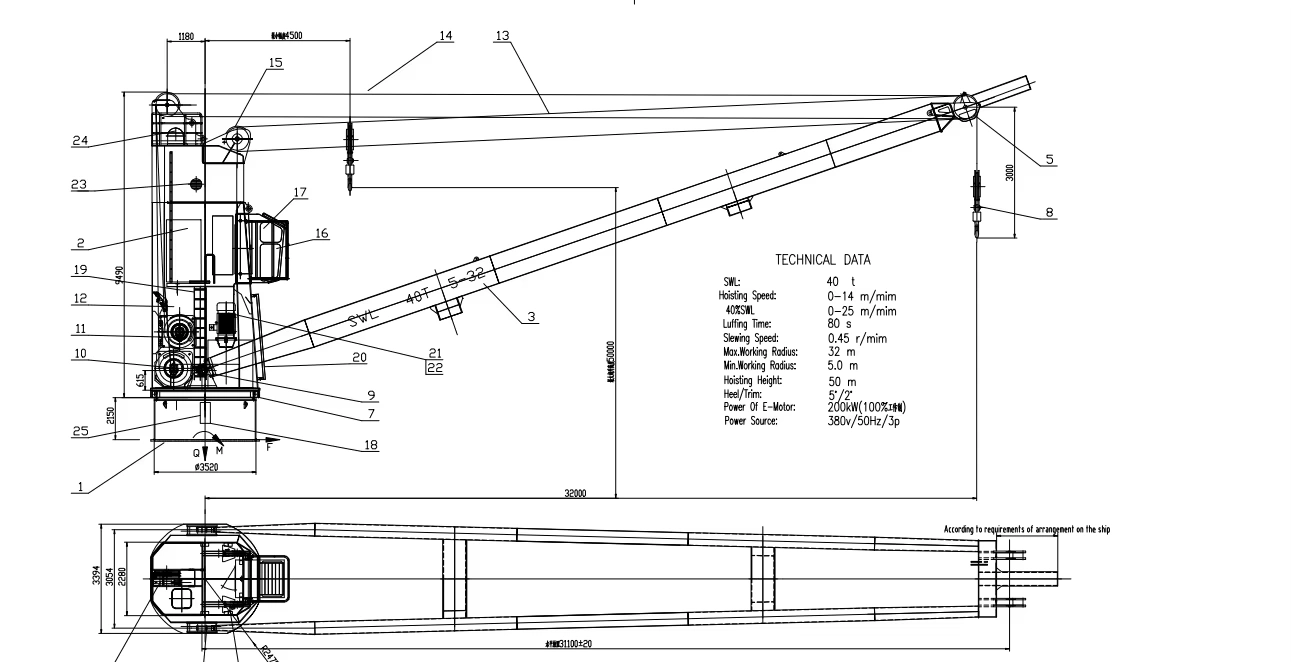
Key Advantages
High Safety and Reliability
Meets strict marine safety standards (CE/SGS/ISO certified).
Uses anti-corrosion materials and wind-resistant design for harsh weather.
-
Includes a fail-safe brake system and strong structure to avoid accidents.
High Efficiency and Productivity
Lifts heavy loads (up to 50t) including containers and bulk goods.
Rotates 360° with smooth hydraulic control for accurate placement.
Level-luffing feature allows steady operation even in rough seas.
-
Energy-saving hydraulic system reduces fuel use and downtime.
Advanced Hydraulic Technology
Uses imported European/American hydraulic parts for better durability.
Offers both electro-hydraulic and manual control options.
-
Adjustable speed for better load handling.
Compact and Space-Saving Design
Modular design fits easily even on small decks.
-
Weather-proof housing allows work in all conditions.
Customizable and Versatile Use
Ready to use with grab attachments (for bulk cargo like coal, grain, minerals).
Suitable for ship-to-shore, port, and emergency operations.
Custom solutions available based on your ship’s needs.
Lift rated loads at rated speed.
Allow easy and flexible lifting/lowering.
Hold and stop cargo safely at any time.
Offer variable speed with smooth control.
Be durable, efficient, and reliable.
Transfer power over long distances easily.
Allow full speed control with stable slow-speed operation.
Provide high force/torque that stays constant over time.
Are safe and reliable even in tough conditions. Safety valves prevent overload.
The hoist winch is driven by a hydraulic motor with constant torque in both directions.
A mechanical brake is released by oil pressure during operation.
The luffing winch adjusts the crane’s arm.
A radial piston pump driven by an electric motor controls oil flow.
The slewing system uses a hydraulic motor and pinion gear.
Oil is cooled or warmed as needed.
Temperature sensors and safety valves protect the system.
All moving parts are lubricated by the hydraulic oil.
20+ years of experience – 2,700+ employees, 680,000㎡ facility.
78,960+ cranes delivered globally (2020 data).
15+ years exporting to 100+ countries with full after-sales service.
Strict quality control: sample checks before production + inspection before shipping.
Standout Features
✅ Full Hydraulic Drive – Runs smoothly with little maintenance.
✅ Fast Loading/Unloading – Cuts down port waiting time.
✅ Shock and Vibration Resistant – Made for heavy daily use.
✅ Easy Maintenance – Parts are easy to reach and service.
✅ Meets Global Standards – Complies with IMO, DNV, ABS, and others.
What is Ship Cargo Handling Equipment?
Ship cargo handling equipment refers to all devices and machinery used for loading and unloading goods on vessels. The type of equipment depends on the cargo. Liquid cargo is moved using pumps, bulk cargo may use conveyors, cranes, or derricks, while packaged or large items are usually handled by cranes or derricks. Container ships often use dedicated port equipment.
Most general cargo ships are equipped with their own loading/unloading devices. This is because not all ports have enough equipment, and ships may need to transfer goods at sea or load supplies. On-board cranes help reduce port time, lower costs, and improve efficiency.
Types of Marine Cranes
Marine cranes can be divided into derrick cranes and slewing cranes. Based on power type, they can be steam, electric, or hydraulic. Today, most ships use electric or hydraulic cranes. Steam cranes are rare except on some tankers (for safety).
A good marine crane should:
It should also be simple to operate, easy to maintain, water-resistant, and use common spare parts.
How Deck Cranes Work
Deck cranes can be hydraulic or electric. Hydraulic systems are widely used because they:
Many cranes use low-speed high-torque motors to drive the winch directly. This avoids the need for gearboxes. Some also use two-speed motors for light/heavy loads. Alternatively, high-speed motors with gearboxes are common in smaller cranes.
Variable displacement piston motors allow light loads to be lifted at higher speeds.
In hydraulic cranes:
The crane structure is welded and mounted on a base. It contains mechanical, hydraulic, and electrical parts. Pulleys with ball bearings are used for lifting. Both luffing and slewing motions are controlled by one lever. Small movements release the brake, and further movement controls speed and direction. Safety devices include relief valves and overload protection.
Quality Assurance & Support
Ideal For:
Bulk cargo ships (coal, grain, ore)
Container vessels and supply boats
Ports, harbors, and offshore platforms
-
Naval, research, and emergency response vessels
Request a Custom Quote Today!
We customize cranes to fit your needs. Contact us for specifications, pricing, and OEM support.
🔹 Certifications: CE | SGS | ISO
🔹 Export Regions: Africa, Americas, Europe, Asia
🔹 Payment Terms: T/T, L/C, Western Union
What Are Ship Lifting Equipment and Their Inspections?
Ship lifting equipment is often used in daily ship operations. Its safety affects both the crew and the vessel. But many crew members are not familiar with inspection requirements. Below are key points about inspections and what to prepare.
1. What is included in ship lifting equipment?
Ship lifting equipment includes:
Derrick systems
Cranes
Cargo and vehicle lifts
Passenger elevators
Vehicle ramps
Derrick cranes are a type of derrick system.
2. Required certificates
For international voyages:
Certificate of Test and Inspection for Lifting Equipment
Record of Test and Inspection for Cranes and Cargo Lifting Appliances
Certificate of Test for Dual Derrick Systems
Certificate for Wire Ropes
Certificate for Lifting Equipment loose gear
For domestic voyages:
A Record Book for Tests and Inspections of Lifting Equipment
3. Inspection rules
All Chinese ships must have lifting equipment inspected.
New equipment or parts that affect strength must be tested and fully inspected.
After an accident or major defect, report immediately for inspection.
Loose gear and wire ropes should be checked before each use. Exception: if inspected within the last 3 months.
Wire ropes with broken wires must be checked at least monthly.
Inspections include:
Initial survey
Annual survey
Renewal survey (every 4 years)
Marking requirements
Approved loose parts must be stamped with:
Safe Working Load (kN)
Test date
ID number
Testing authority mark
Small parts may omit the date and ID.
Cranes and derricks must also be marked after initial or change tests with:
Safe Working Load
Test date
Angle or radius during test
Survey unit’s stamp
4. Usage precautions
Operate within limits: max 5° list, 2° trim, wind speed ≤20m/s.
Check fuel, oil temperature, and environment before use.
Inspect wire ropes and winch pulleys regularly.
After use, secure the boom and hook.
Check pumps and motors for oil leaks.
Only trained operators should use the equipment. Keep others away.
Regularly check wires, hooks, and hydraulic oil. Lubricate key parts. Perform annual inspections.
5. Key inspection items
Confirm all tests and surveys are up to date.
Check load indicators and limit switches—do not exceed safe load.
Inspect for wear and corrosion:
Metal parts should not have >10% corrosion or cracks.
Loose gear should not have >10% wear; pins should not have >6% wear.
Replace wire ropes with severe corrosion or 5% broken wires in 10-diameter length.
Replace brake linings if worn down to rivets.
Check gears for broken teeth or cracks.
Inspect hydraulic lines, slewing rings, and bearings for leaks or damage.
6. Common defects
Missing or expired certificates.
Overloading beyond rated capacity.
Excessive wear or corrosion beyond allowed limits.
Oil leaks in the hydraulic system.


